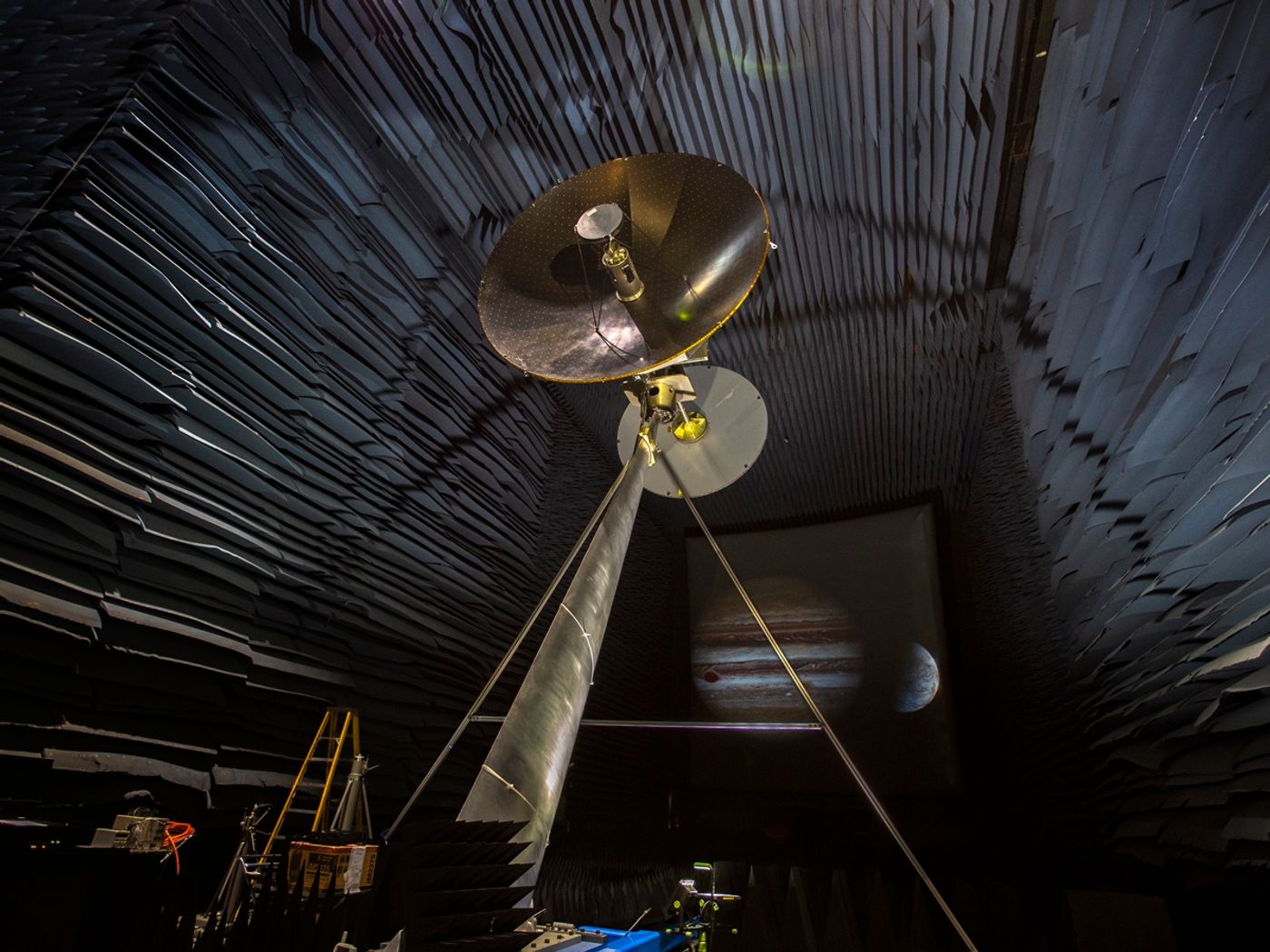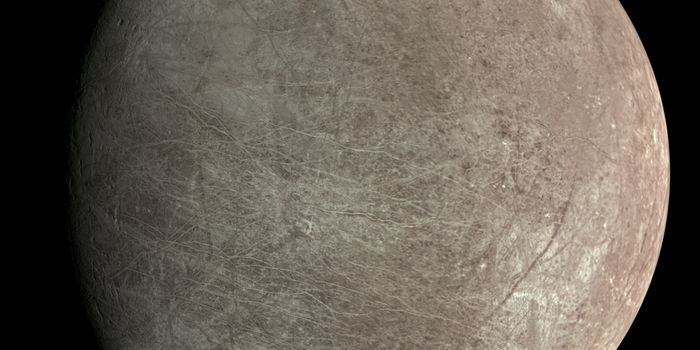NASA Begins Testing Antenna for Upcoming Europa Clipper Mission
At least 69 confirmed moons are orbiting Jupiter at the time of this writing, which means Jupiter earns the ‘more moons than any other planet in the solar system’ award. But as you might come to expect, not all moons are created equally. In fact, some of Jupiter’s moons, such as that of Europa, are a bit more captivating to astronomers than others.
Image Credit: NASA/David C. Bowman
Europa is a somewhat exciting place because astronomers have long thought that the moon harbors a briny sub-surface ocean. Indeed, just beneath that seemingly inconspicuous hard icy shell could be a global body of water, and some scientists even believe that it could play host to alien life forms.
Astronomers have all but proven that Europa actually sports a sub-surface ocean, but direct observations of water plumes erupting from Europa's surface by the Hubble Space Telescope have offered strong evidence for this theory, sparking interest in upcoming NASA missions like Europa Clipper, which will explore the distant moon and attempt to uncover its secrets.
Related: Reexamination of Galileo spacecraft data validates how plumes of water erupt from Europa's surface
NASA’s Europa Clipper mission isn’t expected to launch until the 2020s, but that hasn’t stopped the American space agency from getting its ducks in a row ahead of time. NASA recently commenced testing of a 10-foot-tall prototype of the high-gain antenna (HGA) that will hitch a ride on the Europa Clipper mission and communicate back and forth with scientists on Earth.
The HGA prototype for the Europa Clipper mission currently resides at the Experimental Test Range (ETR) at NASA's Langley Research Center in Hampton, Virginia – one of only a handful of indoor electromagnetic test facilities in the United States where engineers can test this type of equipment and take measurements that will assist in the development of the final product.
"Several years ago we scoured the country to find a facility that was capable of making the difficult measurements that would be required on the HGA and found that the ETR clearly was it," elucidated Europa Clipper project manager Thomas Magner. "The measurements that will be performed in the ETR will demonstrate that the Europa Clipper mission can get a large volume of scientific data back to Earth and ultimately determine the habitability of Europa."
Related: Could humans survive on Enceladus or Titan?
NASA’s initial testing with Europa Clipper’s HGA prototype is mostly done and scheduled to conclude soon, but the space agency will return to ETR sometime next year to conduct further acceptance tests ahead of the mission’s yet-to-be-announced launch date.
"Our branch members are excited that these key test activities, achieved through specialized facility modifications and enhancements made to the ETR these past few years, are significantly contributing towards the ultimate success of the Europa Clipper," added Charmaine Franck, the head of Langley's Electromagnetics and Sensors Branch. "ETR has become a new NASA capability in space-based communications system research with its extended frequency range from X-band to Ka-band."
When Europa Clipper finally launches, it will take anywhere from three to seven years to arrive at its destination, depending on the type of vehicle that lofts it into space and the alignment of the planets at the time of its travels. NASA frequently utilizes planetary gravity as a ‘slingshot’ to help its missions to arrive at their destinations sooner, and we expect that Europa Clipper will be no different.
It will be interesting to see what this mission finds out about Europa when it finally gets where it’s going.
Source: NASA









